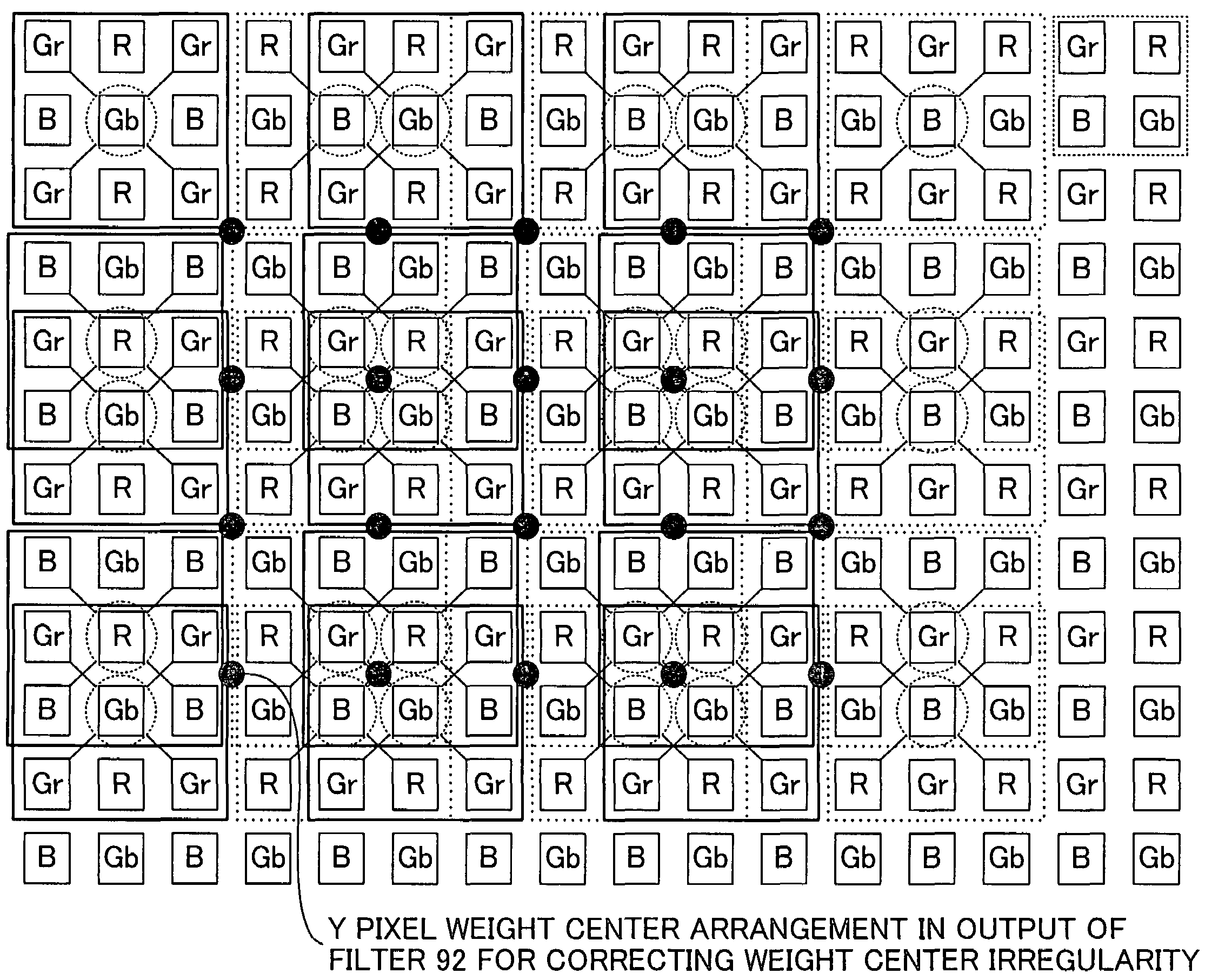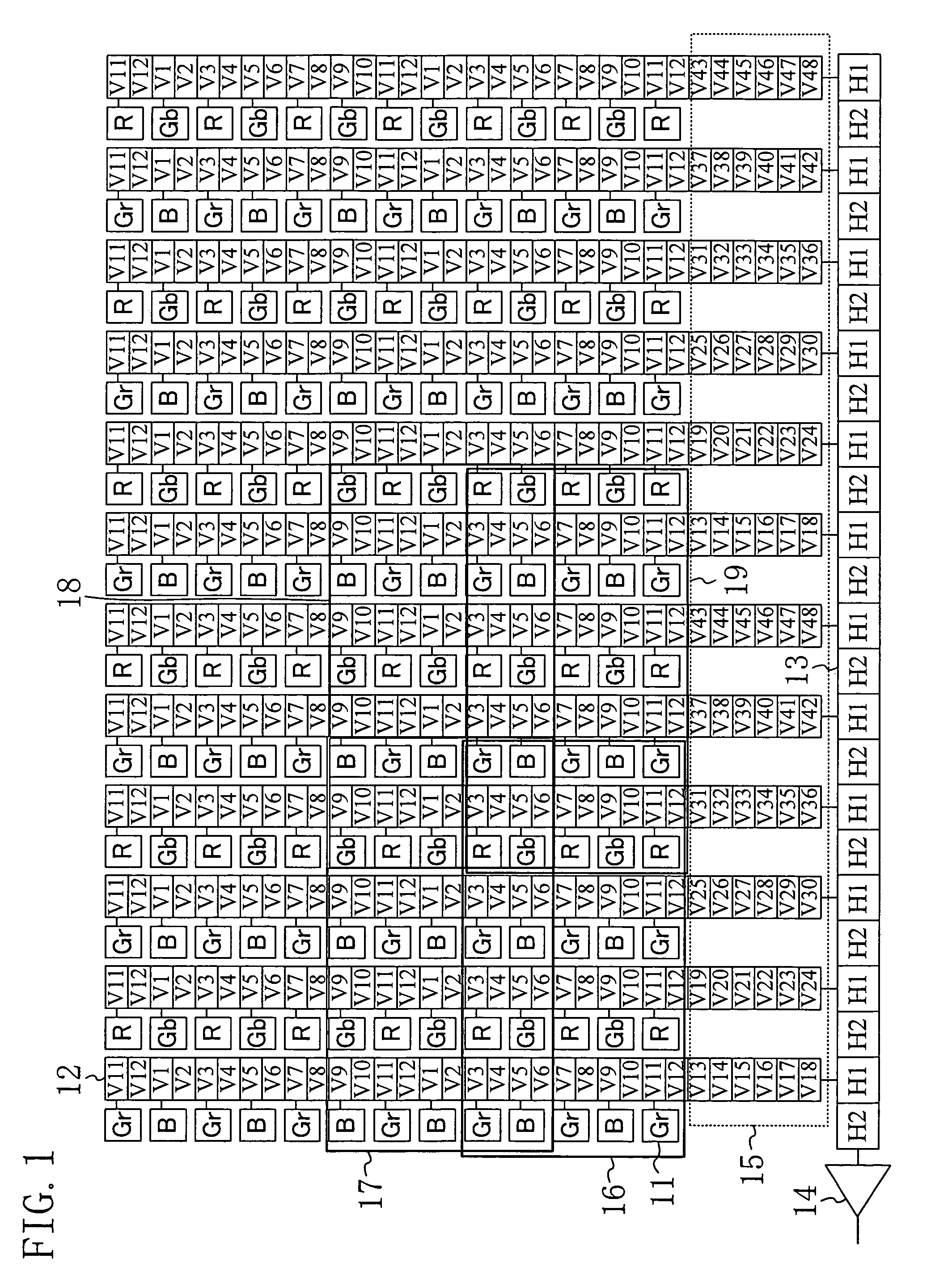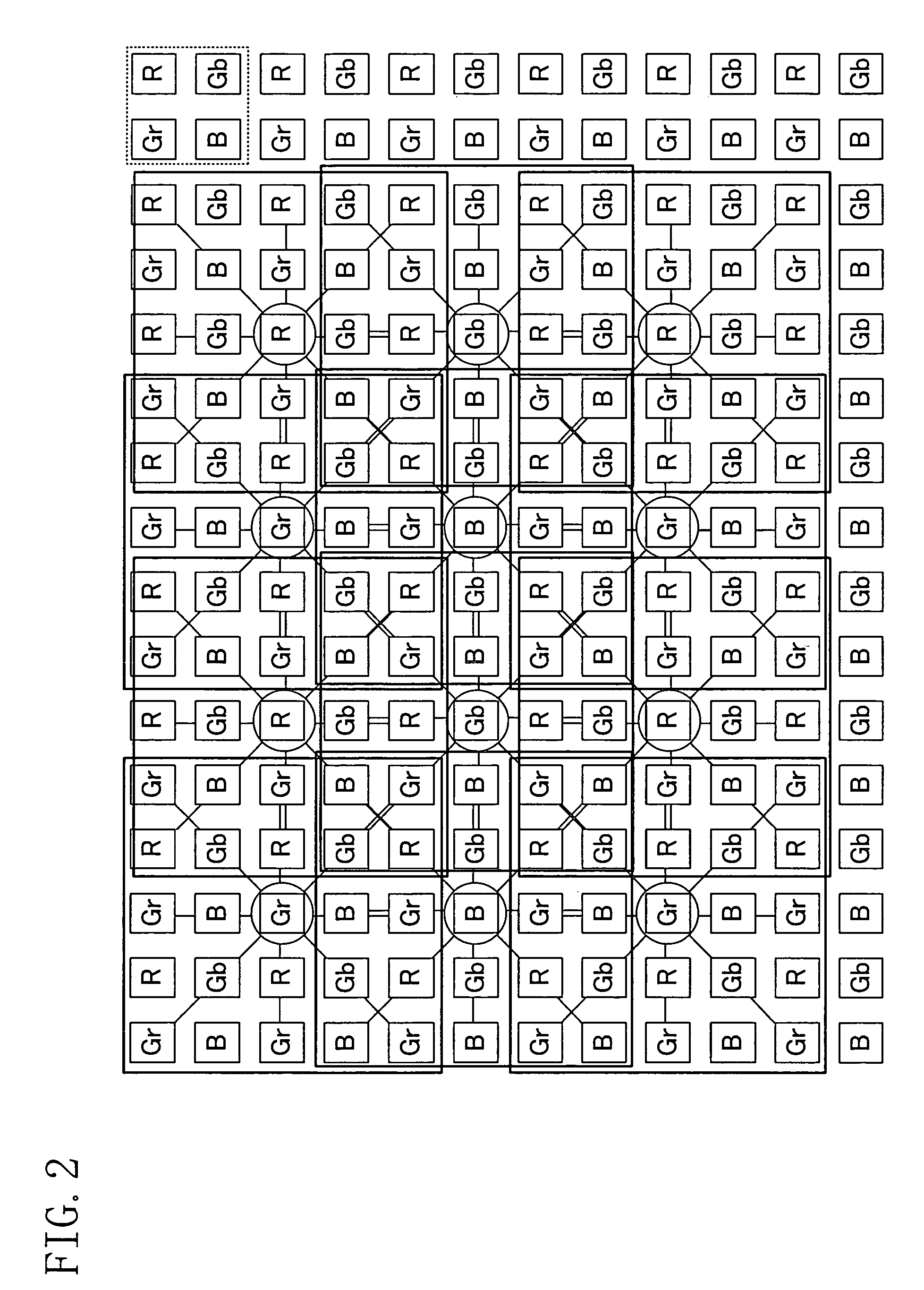Solid-state color imaging apparatus capable of reducing false signals with regard to both luminance and chrominance
a color imaging and solid-state technology, applied in the field of solid-state color imaging apparatus, can solve the problems of large number, camera without a change in frame rate, and inability to output an image signal to a display, and achieve the effects of reducing the aliasing of a high-frequency component appearing as low frequency, enhancing sensitivity, and enhancing the sensitivity
- Summary
- Abstract
- Description
- Claims
- Application Information
AI Technical Summary
Benefits of technology
Problems solved by technology
Method used
Image
Examples
embodiment 1
[0031]FIG. 1 is a diagram showing a configuration of a CCD solid-state imaging device according to a first embodiment of the inventive solid-state color imaging apparatus. Reference numeral 11 denotes a photoelectric converter and a color filter attached to the front face thereof. In this embodiment, color filters each for red (R), green (G) or blue (B) are adopted and are arranged in the manner of a Bayer arrangement, for example. Though Gr and Gb are actually the same color (green), filter pixels horizontally sandwiched between R filters are shown as Gr and filter pixels horizontally sandwiched between B filters are shown as Gb for convenience in describing operation. Reference numeral 12 denotes a vertical transfer stage in 12 phases constituted by V1 through V12. Reference numeral 13 denotes a horizontal transfer stage in two phases constituted by H1 and H2. Reference numeral 14 denotes an output amplifier. Reference numeral 15 denotes a vertical-horizontal transfer control sect...
embodiment 2
[0042]FIG. 5 is a diagram showing a configuration of a CCD solid-state imaging device according to a second embodiment of the inventive solid-state color imaging apparatus. Reference numeral 51 denotes a photoelectric converter and a color filter attached to the front face thereof. In this embodiment, color filters are arranged as a complementary mosaic filter array in two rows and four columns, for example. Reference numeral 52 denotes a vertical transfer stage in 12 phases constituted by V1 through V12. Reference numeral 53 denotes a horizontal transfer stage in three phases constituted by H1 through H3. Reference numeral 54 denotes an output amplifier. Reference numeral 55 denotes a vertical-horizontal transfer control section which is an extension of the 12-phase vertical transfer stage 52 constituted by V1 through V12, has its gates independently wired, and is constituted by V13 through V48. Reference numeral 56 denotes a basic unit of a pixel adding area for Mg. Reference nume...
embodiment 3
[0054]FIG. 7 is a diagram showing a configuration of a CCD solid-state imaging device according to a third embodiment of the inventive solid-state color imaging apparatus. Reference numeral 71 denotes a photoelectric converter and a color filter attached to the front face thereof. In this embodiment, color filters are arranged in the manner of a Bayer arrangement, for example. Reference numeral 72 denotes a vertical transfer stage in eight phases constituted by V1 through V8. Reference numeral 73 denotes a horizontal transfer stage in two phases constituted by H1 and H2. Reference numeral 74 denotes an output amplifier. Reference numeral 75 denotes a vertical-horizontal transfer control section which is an extension of the eight-phase vertical transfer stage 72 constituted by V1 through V8, has its gates independently wired, and is constituted by V9 through V24. Reference numeral 76 denotes a basic unit of a pixel adding area for Gr. Reference numeral 77 denotes a basic unit of a pi...
PUM
 Login to View More
Login to View More Abstract
Description
Claims
Application Information
 Login to View More
Login to View More - R&D
- Intellectual Property
- Life Sciences
- Materials
- Tech Scout
- Unparalleled Data Quality
- Higher Quality Content
- 60% Fewer Hallucinations
Browse by: Latest US Patents, China's latest patents, Technical Efficacy Thesaurus, Application Domain, Technology Topic, Popular Technical Reports.
© 2025 PatSnap. All rights reserved.Legal|Privacy policy|Modern Slavery Act Transparency Statement|Sitemap|About US| Contact US: help@patsnap.com



